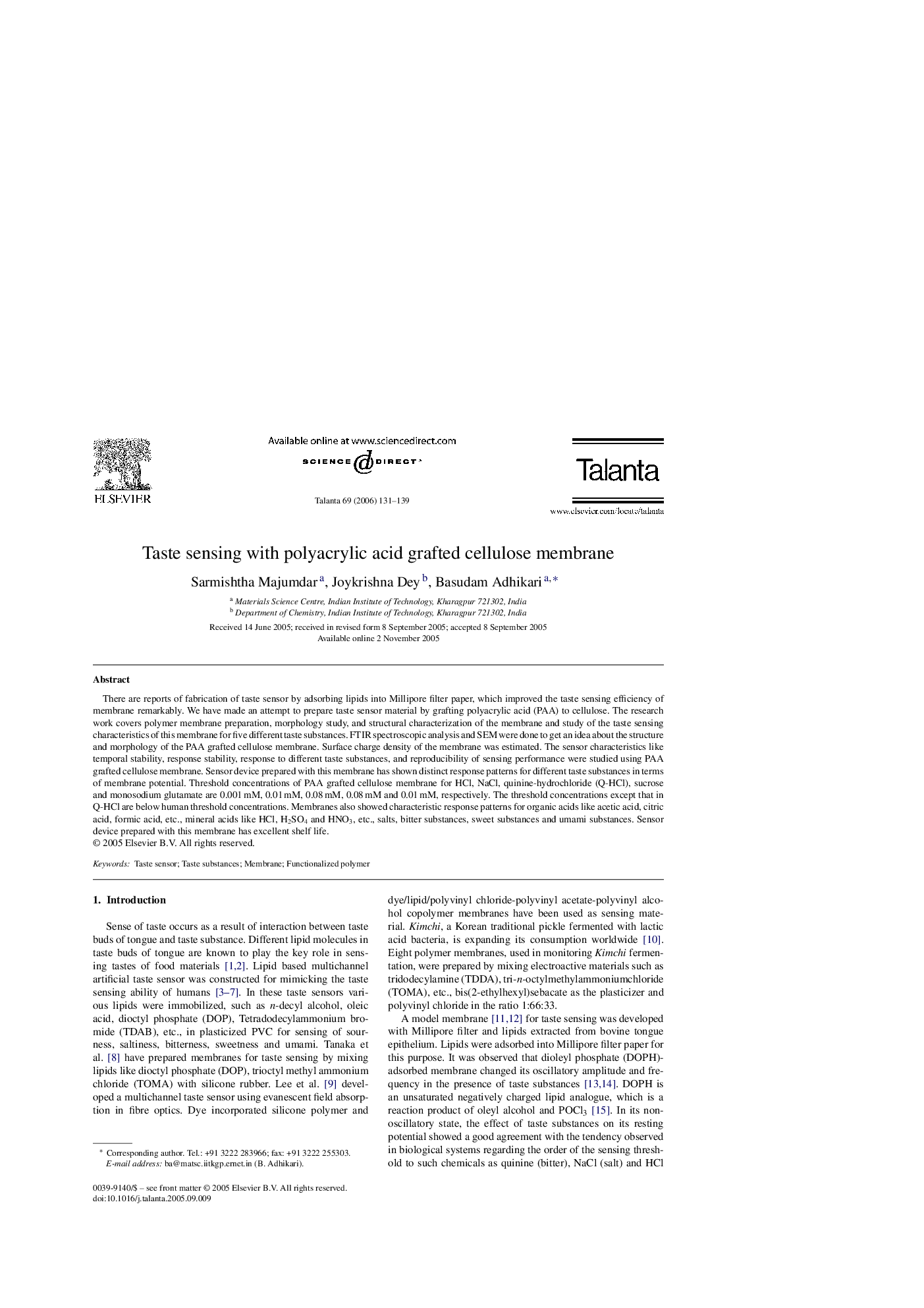| Article ID | Journal | Published Year | Pages | File Type |
|---|---|---|---|---|
| 1245780 | Talanta | 2006 | 9 Pages |
There are reports of fabrication of taste sensor by adsorbing lipids into Millipore filter paper, which improved the taste sensing efficiency of membrane remarkably. We have made an attempt to prepare taste sensor material by grafting polyacrylic acid (PAA) to cellulose. The research work covers polymer membrane preparation, morphology study, and structural characterization of the membrane and study of the taste sensing characteristics of this membrane for five different taste substances. FTIR spectroscopic analysis and SEM were done to get an idea about the structure and morphology of the PAA grafted cellulose membrane. Surface charge density of the membrane was estimated. The sensor characteristics like temporal stability, response stability, response to different taste substances, and reproducibility of sensing performance were studied using PAA grafted cellulose membrane. Sensor device prepared with this membrane has shown distinct response patterns for different taste substances in terms of membrane potential. Threshold concentrations of PAA grafted cellulose membrane for HCl, NaCl, quinine-hydrochloride (Q-HCl), sucrose and monosodium glutamate are 0.001 mM, 0.01 mM, 0.08 mM, 0.08 mM and 0.01 mM, respectively. The threshold concentrations except that in Q-HCl are below human threshold concentrations. Membranes also showed characteristic response patterns for organic acids like acetic acid, citric acid, formic acid, etc., mineral acids like HCl, H2SO4 and HNO3, etc., salts, bitter substances, sweet substances and umami substances. Sensor device prepared with this membrane has excellent shelf life.
